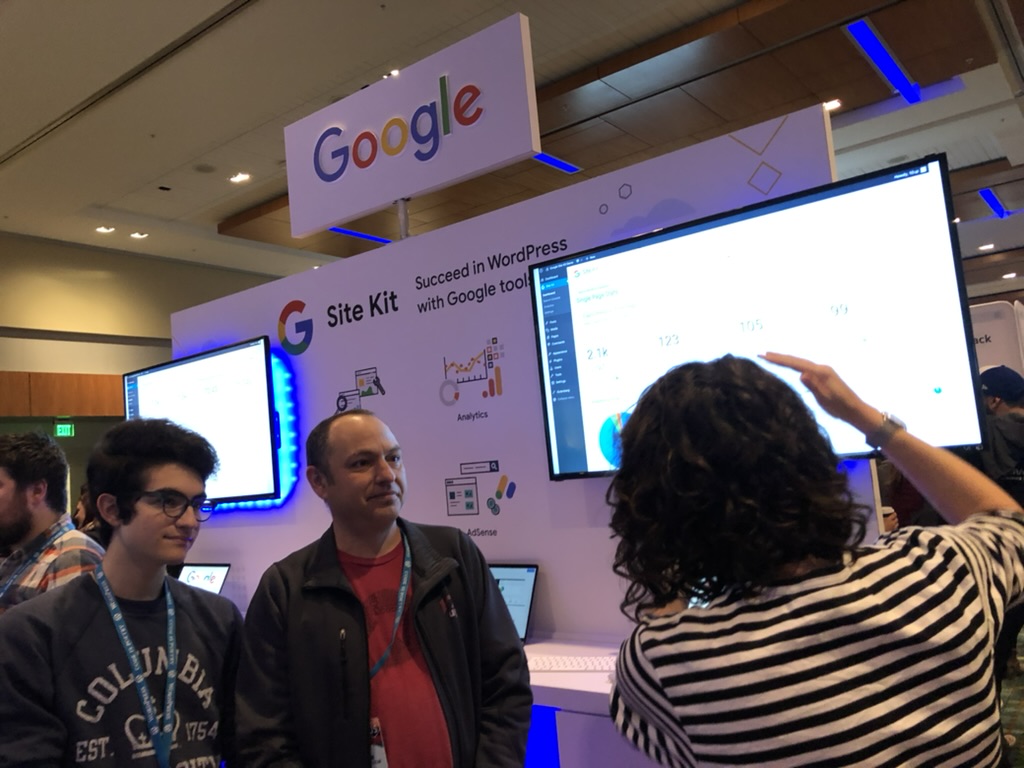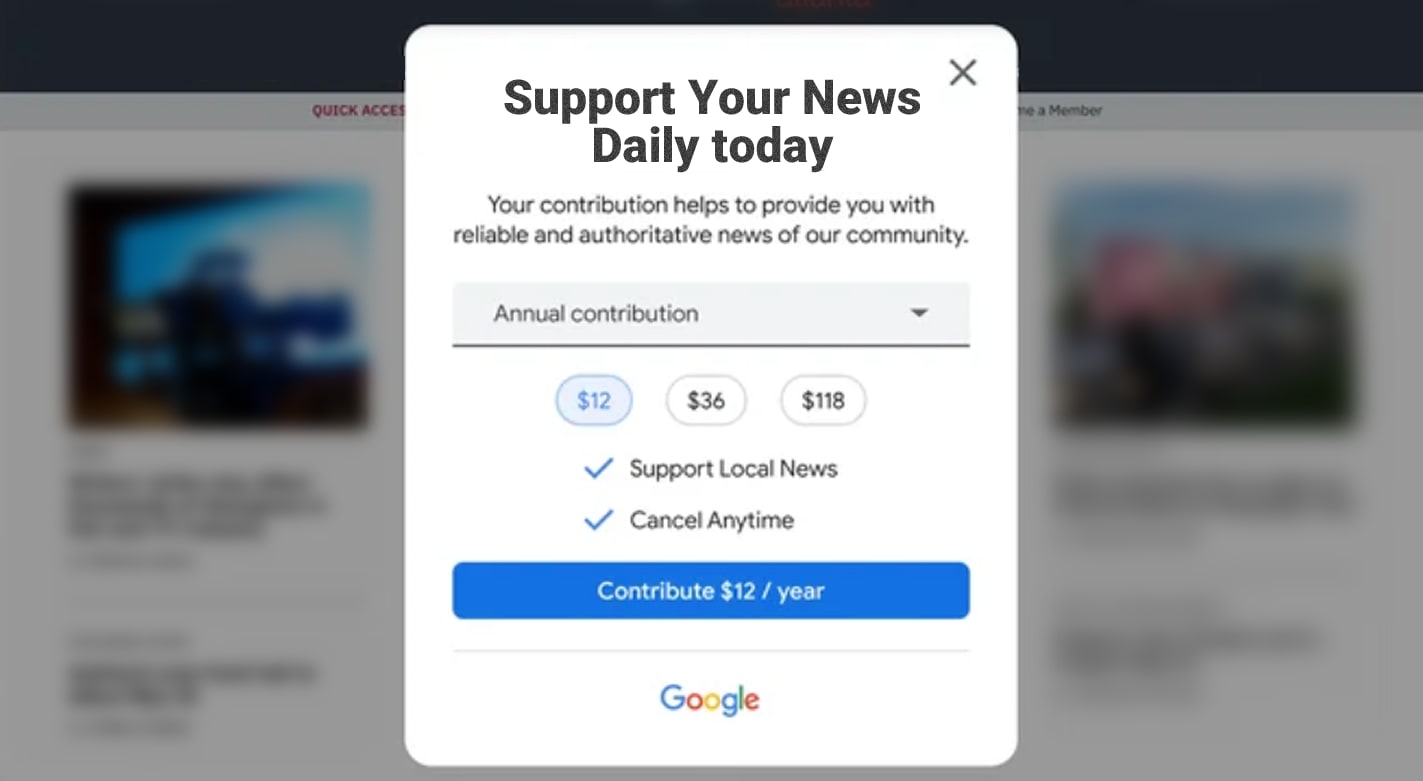We worked with Google to create Site Kit, bringing tools like Analytics and AdSense into the WordPress dashboard and the hands of 5 million site owners. What began as an ambitious product continues to shape the future of WordPress and the open web.
The Case and Team for Site Kit
In 2018, Google recognized a clear opportunity. WordPress powers more than 40% of the web, but site owners faced a confusing, fragmented experience when trying to connect with Google’s most valuable tools. There was no simple, intuitive, trustworthy way for WordPress site owners to connect to Google tools and access their data securely directly in their WordPress dashboard.
That disconnect was at odds with Google’s desire to invest in a thriving open web. Google aims to support a healthy web ecosystem by ensuring site owners have access to the right tools to understand how their sites perform, how visitors find them through Google Search, and how to earn revenue from high-quality content. When those tools are hard to access in the CMS powering more than 40% of the web, it creates unnecessary friction for users and hinders the broader ecosystem.
Following several conversations and a competitive selection process, including a bid against the incumbent, Google selected 10up, now the WordPress practice of Fueled, to bring Site Kit to life: a secure, first-party, free plugin built natively for WordPress. The mandate was clear: ship a trusted 1.0 that felt seamlessly integrated into the WordPress experience while reflecting Google’s standards for security, performance, and usability, and get it into the hands of millions.
Phase 1: From Concept to Preview (2018–2019)
The goal in the earliest phase wasn’t just to build: it was to explore and validate. Working hand-in-hand with Google, we led the initial architecture, plugin design, and admin UI strategy, drawing from years of experience creating WordPress-native interfaces. The team launched the developer preview at WordCamp Europe 2019, offering integrations with Google Analytics, Search Console, AdSense, and PageSpeed Insights—all inside the WordPress dashboard.
At events like WordCamp Europe and WordCamp US, our teams stood shoulder to shoulder with Google at the Site Kit booth, demoing features, answering questions, and gathering user feedback directly from the WordPress community. That co-presence exemplified the tightly collaborative nature of our partnership.

One of the biggest unlocks was the development of a secure, custom OAuth proxy service. Because WordPress plugins are open source and run on third-party servers, storing client secrets directly in plugin code is a non-starter. The middleware, hosted and secured by Google, enabled Site Kit to handle authentication safely and seamlessly. This system was developed in close collaboration with internal Google engineering teams, who built and maintained the private services that powered the underlying authentication flow. It also powered something new: for users who hadn’t set up services like Analytics yet, Site Kit could provision those services automatically. No jumping between tabs, no API credential setup. Just connect your account, and go.
The initial release validated the product direction and generated immediate traction. Feedback from early adopters helped us polish the experience, resolve edge-case issues, and refine flows as we moved toward a broader launch.
Phase 2: 1.0 and Foundations for Scale (2019–2020)
Site Kit 1.0 officially launched in the WordPress plugin directory in late 2019. It marked the first time site owners could install a Google-maintained plugin and set up multiple services, like Analytics and Search Console, within minutes. The unified dashboard brought together data from across Google’s ecosystem into one, intuitive overview.

From day one, Site Kit’s public launch was a success. But success brought scale—and scale meant we had to invest in the foundation. Getting to an MVP quickly validated demand and unlocked internal investment, justifying a broader roadmap. Once there was proven adoption, the team had the runway to build a more modular, extensible architecture to support the next generation of features. Working closely with Google’s engineers, we undertook a strategic refactoring effort: optimizing performance, abstracting core modules, expanding test coverage, and building the internal APIs needed for future growth.
We also quickly moved from a waterfall-style launch into two-week sprint and release cycles, formalizing QA and support operations, and managing work transparently via GitHub. By the end of 2020, Site Kit was closing in on a million active installs, and our team was fully embedded in day-to-day development, support, release management, and roadmap execution, in close collaboration with Google’s product owners and technical leads.
Phase 3: Platform Maturity and Personalization (2021–2022)
As Site Kit’s adoption grew, we shifted from launching features to maturing the product into a real platform. The team introduced a redesigned, unified dashboard using Google’s Material 3 design system, streamlining the experience across modules. Feature flags and phased rollouts allowed us to test new capabilities and gather feedback before full deployment.
One of the most significant releases in this era was Dashboard Sharing. Until then, only admins with linked Google accounts could see Site Kit’s data. Our team helped design and implement a secure way to grant read-only access to additional WordPress roles—allowing content teams, collaborators, and clients to view performance data without admin access or Google credentials. This marked a major step forward in Site Kit’s usability within multi-user environments.
Personalization also became a focus. We introduced a lightweight onboarding flow to gather user input about their site goals—blogging, business growth, monetization, and more—and tailored their dashboard experience accordingly. This culminated in the launch of the Key Metrics Widget, which placed goal-aligned metrics front and center on the dashboard. A publisher might see top content and returning visitor stats, while a site monetizing with AdSense would see earnings and page performance insights. The widget transformed Site Kit from a static dashboard into a personalized performance command center.

Phase 4: Smarter Insights and New Integrations (2023–2024)
As the ecosystem evolved, we helped Site Kit stay ahead. In 2023, the transition to Google Analytics 4 (GA4) became a major industry milestone. We led the update to support GA4 properties within Site Kit, ensuring a seamless migration path and unlocking access to richer insights around user behavior, audience segmentation, and event tracking.
We also introduced new modules, including Sign in with Google, which made it easy for site owners—and their users, in the case of membership or e-commerce sites—to log in using their Google credentials.
We also helped launch Reader Revenue Manager (RRM) integration—supporting donations and subscriptions for publishers ready to diversify their monetization beyond ads. RRM allows site owners to place contribution prompts and subscription calls-to-action directly onto their site, managed and served through Google’s infrastructure. With Site Kit, these elements can be set up and managed in just a few clicks, and their performance can be tracked alongside traditional ad revenue and traffic metrics. The result is a more flexible and future-ready monetization model—especially valuable for news organizations, creators, and nonprofits.

All the while, we maintained a consistent release cadence, supported millions of active users, and helped publishers be more sustainable by earning revenue via AdSense. By late 2024, Site Kit surpassed 4.5 million active installs, had delivered hundreds of public releases, and remained one of the most highly rated plugins in the WordPress ecosystem.
Phase 5: Looking Ahead—From Tool to Copilot (2025 and Beyond)
The next evolution of Site Kit is about proactive guidance. Instead of passively showing charts, Site Kit is evolving into a WordPress copilot—an intelligent assistant that surfaces insights, identifies opportunities, and suggests next steps based on each site’s goals.
We’re also exploring deeper connectivity with other popular WordPress tools and with hosting providers. These host integrations will make Site Kit even more accessible to WordPress site owners, baking in seamless Google setup and connectivity into the very steps in setting up a site.
This next phase also revisits and improves the onboarding and setup flow, making Site Kit’s growing power and personalization more approachable for first-time users. And as Site Kit continues to evolve, it’s also becoming a model for Google’s broader efforts to integrate its services with other platforms across the web—drawing from the foundation and lessons built here.
Fueled’s Evolving Role: From Startup-Scale to Embedded Leadership
Our role in Site Kit has grown steadily over time. Fueled began with a focused team of four, responsible for the plugin’s early design, UX, and engineering in close partnership with Google. As Site Kit scaled from preview to launch to platform maturity, Google entrusted more responsibility to us—across engineering, support, product strategy, and user experience.
Today, Fueled:
- Maintains a team of more than 25 cross-disciplinary experts—engineers, designers, QA analysts, project managers, and strategists—dedicated to Site Kit
- Drives product planning and feature implementation across the full Site Kit roadmap
- Manages support, triage, and release operations across millions of active installs
- Maintains the authentication middleware and Site Kit’s open source repository
- Collaborates with a half dozen distinct Google product and engineering teams
Navigating multiple stakeholders across Google’s org chart, we serve as a trusted and embedded partner, helping align goals, balance priorities, and execute with at scale.

A Model for Building Inside the Open Web
Site Kit proves that when global platforms invest in the open web—and choose the right partner—they can meet users where they are and raise the bar for everyone. For Google, Site Kit creates a trusted channel into millions of sites. For WordPress site owners, it simplifies complexity and delivers real value.
For Fueled, Site Kit is a showcase of what we do best: designing elegant solutions to complex challenges, collaborating deeply, and helping ambitious products scale with clarity and purpose. If you’re thinking about building for WordPress—or building inside the open web—we’re doing it at the highest level, and we’re just getting started.



